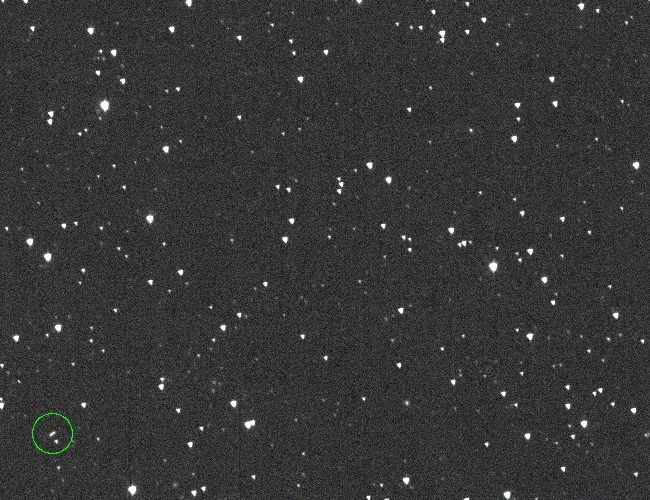If you’ve been worrying about reports of a possible asteroid impact in 2032, we have very good news! NASA has dropped the probability of an impact from asteroid 2024 YR4 to 1 in 67.
NASA announced the reduced impact risk on its X feed at around 5:00 p.m. EST (2200 GMT) on Wednesday (Feb. 19). The updated assessment was based on new orbital data for the asteroid, which is estimated to be around 180 feet (55 meters) wide, collected overnight between the Feb. 18 and Feb. 19.
The radical drop in impact risk for 2024 YR4 came just a day after its risk factor was increased to 1 in 32 or 3.1%. This increase saw 2024 YR4 become the most risky asteroid in the history of NASA’s Center for Near Earth Object Studies (CNEOS) Sentry Risk Table was introduced.
Despite the extreme drop in impact risk, 2024 YR4 still sits at the top of the Sentry table. The next riskiest asteroid on the table is 1950 DA, which has a 0.039% chance of impacting Earth in 2880.
Regarding the drop in 2024 YR4’s impact risk on Dec. 22, 2032, NASA wrote: “New observations of asteroid 2024 YR4 helped us update its chance of impact in 2032. The current probability is 1.5%.
“Our understanding of the asteroid’s path improves with every observation. We’ll keep you posted.”
New observations of asteroid 2024 YR4 helped us update its chance of impact in 2032. The current probability is 1.5%.Our understanding of the asteroid’s path improves with every observation. We’ll keep you posted. https://t.co/LuRwg1eaCv pic.twitter.com/SfZIxflB95February 20, 2025
As NASA dropped the impact risk of 2024 YT4, the European Space Agency (ESA) also reduced the asteroid’s risk of impacting Earth in 2032 to 1.38% or around 1 in 73.

Of course, this is an opportunity for Space.com readers to tell their friends, “I told you so,” about a drop in the impact risk of 2024 YR4!
We’ve been talking to asteroid hunter David Rankin, who first “precovered” (short for pre-discovery recovery) asteroid 2024 YR4 in data from the Catalina Sky Survey (meaning he was able to find images of the space rock in archival data that was gathered prior to its official discovery) since it hit the top of the Sentry Risk Table.
He’s been predicting that it’s only a matter of time until the odds of an impact dropped significantly.

Rankin has been reassuring readers of Space.com all along that the risk of 2024 YR4 would climb rapidly and then begin to decrease as astronomers collect more data about the asteroid.
The asteroid hunter from the Catalina Sky Survey previously explained how uncertainty in the path of 2024 YR4 arises with an analogy.
“Imagine holding a stick that is a few feet long. If you move the stick in your hand a fraction of an inch, you hardly notice any movement on the other end,” the researcher said. “Now imagine that stick is many millions of miles long. Moving your hand a fraction of an inch will cause dramatic changes on the other end.”

“In this case, that ‘fraction of an inch’ is tiny uncertainties in the positional measurements of the asteroid from the telescopes’ images that can arise from small timing errors and small positional errors,” Rankin continued. “It’s not possible to get a ‘perfect’ measurement of the asteroid from any telescope.”
Even if 2024 YR4 misses Earth in 2032, there remains a small chance, about 1 in 125 or 0.8%, that the asteroid could strike the moon.
Of course, by far, the most likely outcome is this asteroid missing Earth and its lunar companion and continuing on its path around the sun.
We might have to wait a while until we have more solid info on 2024 YR4’s passage through the inner solar system. The asteroid is currently heading away from Earth, but it is set to swing back toward our planet in 2028, once again becoming visible to ground-based telescopes.
Even if 2024 YR4 doesn’t impact Earth, its scientific impact, as it offers a chance to see an asteroid up close and personal, is immense.
Article by:Source:














